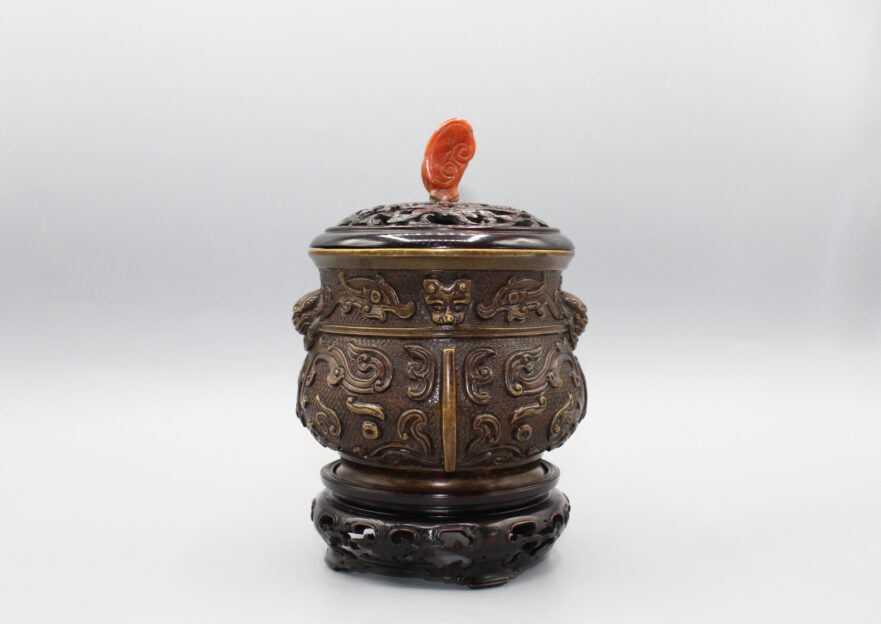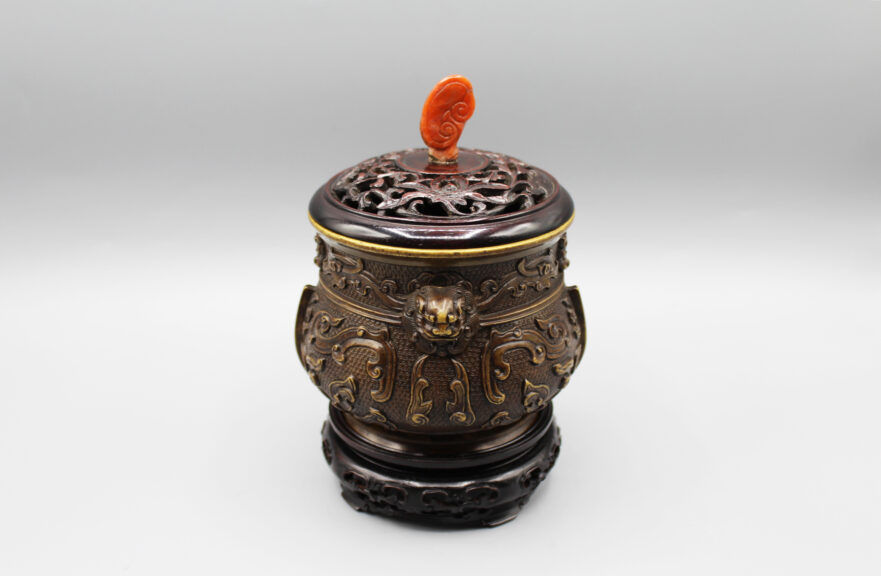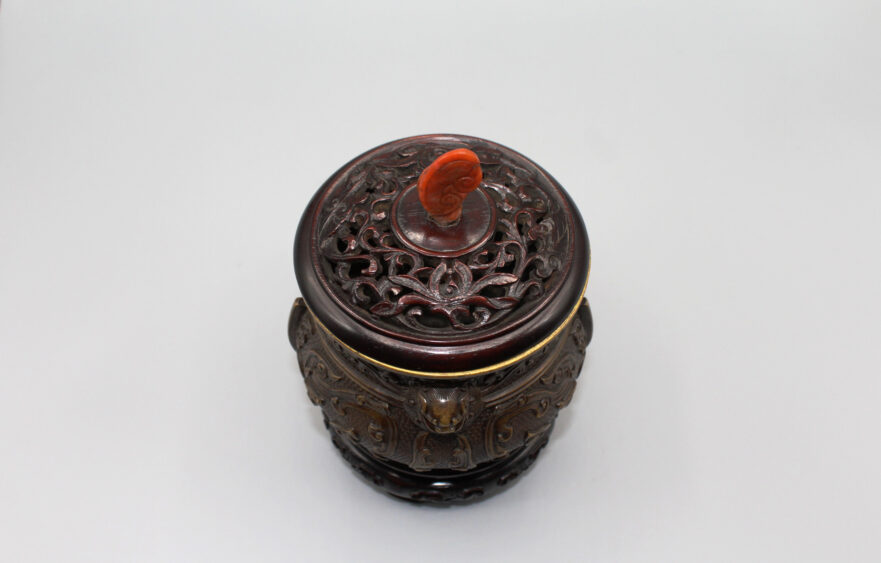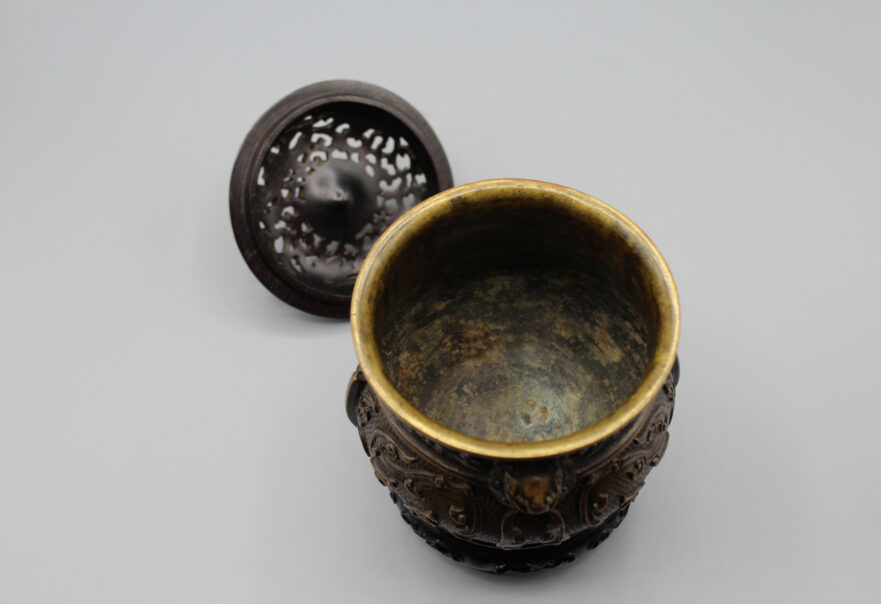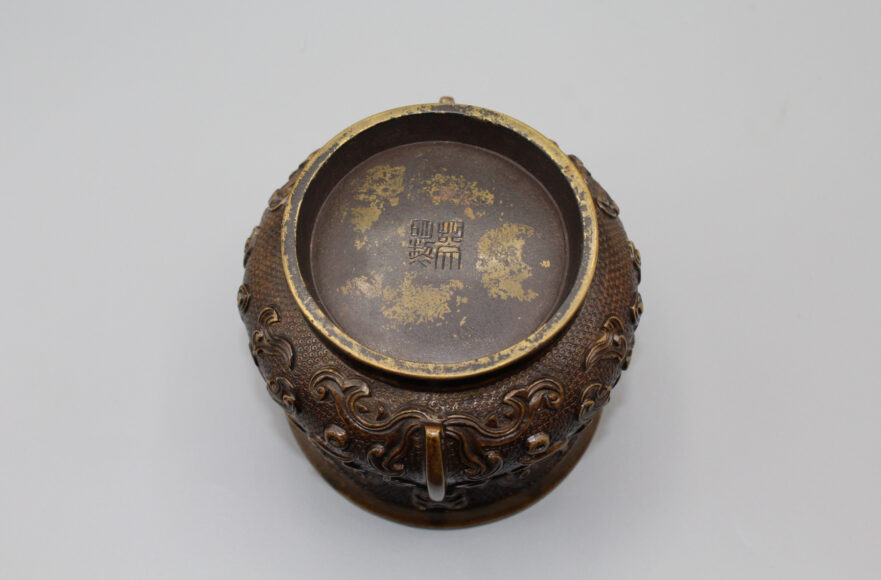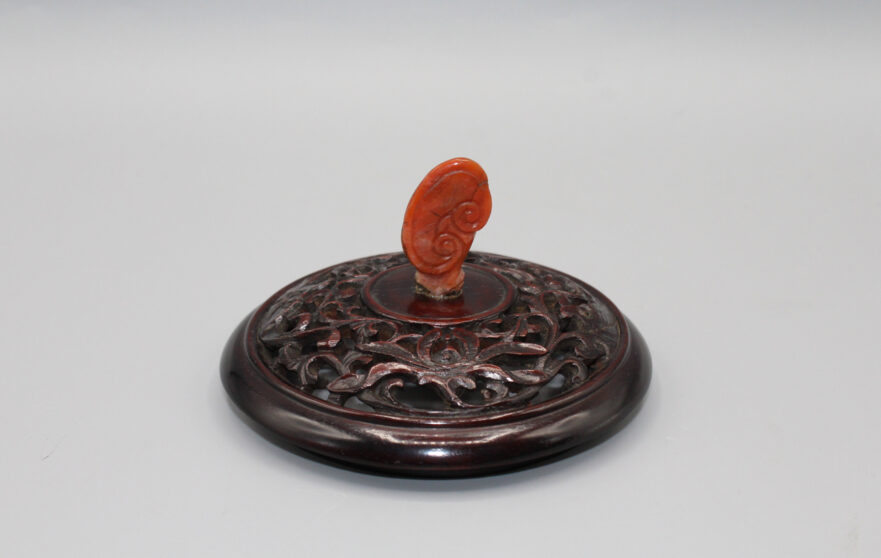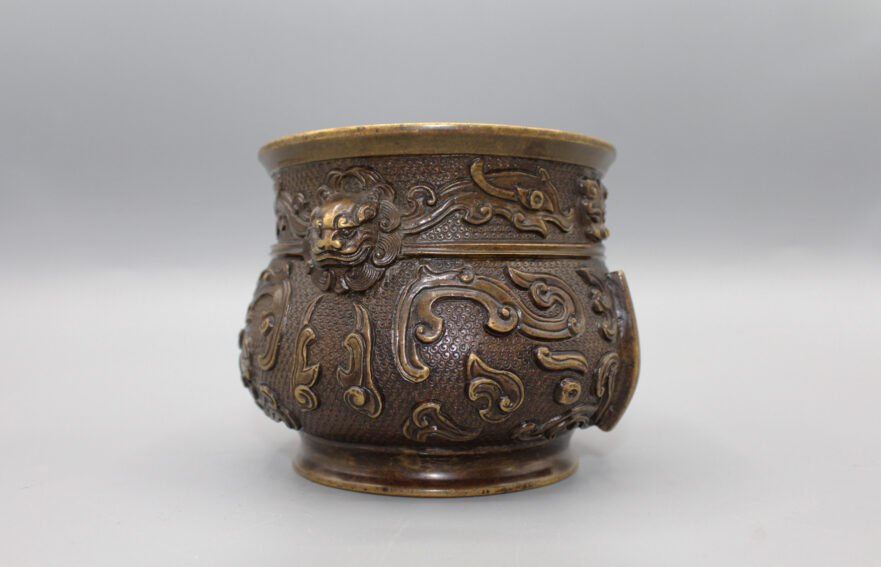660. Chinese Bronze Incense Burner
Chinese Bronze Incense Burner
晚明铜兽面簋式炉
This is a bronze incense burner modelled after an archaic Gui vessel. Its design is based on a prototype from the late Shang period (16th century – c.1046 BC) or early Western Zhou period (c.1046 – 771 BC). The rounded sides of the incense burner curve inwards toward the rim and then flare out again at the double lip.
The incense burner features an openwork carved wooden lid adorned with coral knobs, accompanied by a hongmu wood stand.
The main body of the incense burner is adorned with intricate low relief carvings of lions, monsters, and phoenixes, set against a backdrop of crested clouds and waves. Such incense burners were commonly placed on altar tables during religious ceremonies.
The base of the burner is incised with the inscription "Hu Wenming Zhi" (made by Hu Wenming). Hu Wenming, hailing from Yunjian (modern-day Shanghai), is regarded as the most skilled artist of the late Ming dynasty.
晚明仿古簋式铜香炉。其器型设计基于商代晚期(公元前16世纪 - 公元前1046年)或西周早期(公元前1046 - 771年)的青铜簋。深圆腹,口沿外撇,古朴典雅。配镂空雕花木盖,饰有珊瑚钮,和红木底座。
香炉主体饰有精美的浅浮雕狮子、怪兽和凤凰,背景是云朵和波浪。 在宗教仪式期间,这种香炉通常放置在祭坛上。
炉底刻有“胡文明制”。胡文明, 云间(今上海)人,明代铸铜工艺名匠,最擅长铸造铜炉,并能按古式制造彝、鼎、尊、卣之类的铜器极精,时称“胡炉”或“胡铜”。《云间杂志》称“郡西有胡文明者, 按古式制彝、鼎、尊、卣之类,极精,价亦甚高,誓不传他姓”。

